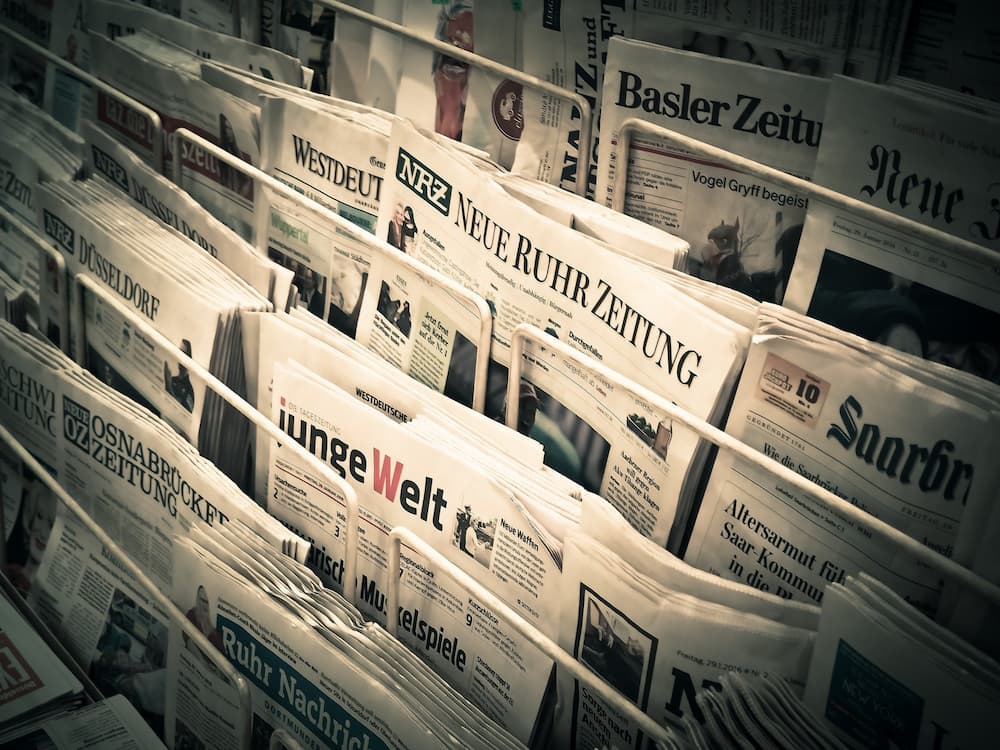
Media Communication
Media are the tools used to store and deliver message or data while communication is the act of receiving and giving information. It aims at delivering information and educating the society. Additionally, it aims at bringing a change in people’s beliefs and opinions on issues that are among us in the society.
Aims and Objectives of Media Communication
Media communication plays a major role in the society to serve the public with information easily. The following are some of the major aims and objectives of it:
- Building public sentiments
Media communication plays a role in creating public opinion on any national issue. It provides the audience with a greater picture of world’s functions of events, politics etc. Additionally, it builds people’s opinion through commentaries and articles.
- Informing People
Major focus of the media communication is to inform people by providing them with information that may be related to weather, sports or politics among others. Information regarding any field reaches the audience through media tools.
- To achieve goals
Goals achieved can be long term or short term. Communication achieves the desired objectives by persuading the target audience. Most of the brands use media communication to influence other organizations to use that platform to carry out their plans and aims.
- Promoting services and products
Message is conveyed by the help of media communication to promote products, goods and services. Some of the means used are through radio, magazines, internet and television. Information passed always targets the prospective customers and audience in general.
- Promoting different political ideologies
Most of the political groups depend on media communication to promote their ideologies, plans and manifestos hence creating public opinion in their favor.
- Creating public awareness
Media Communication aims at creating awareness especially awareness pertaining natural disasters like floods and fire. Through this communication, strategies and programs are circulated so that people get to take action.
Additionally, the government uses media communication to announce programs such as vaccinations and health education so that the audience may be aware of the functions.
Types of Media Communication
Media can be grouped into 4 types; print media, broadcast media, Out of Home media and Internet.
- Print Media
Print media its main mode of communication its printed materials such as magazines and newspapers.
-Newspapers are the major source of information and it has the highest number of readers since it is affordable and reliable. The message conveyed inside a magazine is detailed which is very convenient.
There are diverse types of newspapers; National Newspapers, daily newspapers (Regional or local magazine) and special audience newspapers.
Advantages of Newspapers
- It is cheap and reliable
- Flexibility
- It has high audience
- Widespread coverage
Disadvantages of Newspapers
- Its life span is short
- It is hard to reach poor and illiterate audience
- It is limited to people of different lifestyle
-Magazines are special type of newspapers but they have different presentation of content. Magazines can be classified as regional or local, weekly or monthly. They have special advertising method and delivers entertainment, educational information and other specialized contents.
There are different types of magazines; Consumer magazines and Business publications.
Advantages of magazines
- Long lasting
- It reaches specialized groups
- It can create a reputation
- It is highly selective thus less wastage of circulation
Disadvantages of magazines
- It is costly
- There might be competition
- It has a limited reach and frequency
- Broadcast Media
Broadcast media includes television advertising and radio
-Radio has a wider audience reach and delivers message to a large group of people across the region. It has resilient advantages over any other broadcast media.
Advantages of radio as a means of Media Communication
- It is cost efficient
- It has a wide coverage
- It is flexible
- It encourages listeners to use imagination.
Disadvantages of radio
- It has a limited research data
- Too many advertisement messages
- Lack of visual elements
-Television it is believed to have the influential medium that reaches a large audience. Visual elements, sound and color are combined to achieve viewer’s taste.
Advantages of Television as a means of Media Communication
- Has a high flexibility
- Has a wider coverage
- It is a powerful audio-visual means of communication
Disadvantages of Television
- Although has a wider coverage it is costly
- It has a limited attention by viewers
- Naturally, it is intrusive.
- Support Media
It majorly consists of advertising such as Outdoor Advertising, Transit advertising and Cinema and Video Advertising as a means of Media Communication.
-Outdoor Advertising includes use of billboards and posters to convey message. It aids in reminding customers and generating sales at point of buying. It is very useful when it comes to launching a new product in the market.
Advantages of Outdoor Advertising
- It is cheap and reliable
- It has a Place of Purchase advantage
- Its impact is flexible and creative.
Disadvantages of Outdoor Advertising
- Its effectiveness is limited
- It has limited message
- Message when exposed over time, it fades
-Transit Advertising involves use of neon signs and electronic messages. It targets audience are the ones who uses different modes of transport.
Advantages of Transit Advertising
- Its exposure is for long
- It is cheap
- Selectivity of Geographic areas
Disadvantages of Transit Advertising
- Creativity is limited
- Has a very brief and shallow message
- Coverage is wasted in large
-Cinema and Video Advertising involves use of cinema halls and video preserved in form of tapes to deliver message. The films are watched by different group of people every day. Advertisers can prepare an advertisement that will later be displayed by cable operators.
Advantages of Cinema and Video Advertising
- It has a large exposure
- Selectivity
- Inadequate clutter
Disadvantages of Cinema and Video Advertising
- There is limited reach
- Limited frequency
- Audience may experience irritation
Barriers in Media Communication
Communication barriers are obstacles that preventing conveying of communication. They include:
- Physical barriers
- Emotional barriers
- Identity barriers (includes: gender, ethnic, disability etc.)
- Semantic barriers (interpretation of words and symbols used to communicate)
- Accessibility barriers
- Attention Barriers
- Credibility barriers
Overcoming Barriers in Media Communication
The following are ways in which one can overcome the barriers in media communication
- Using the language that every person understands
- Holding communications in areas where there is free of distractions
- Respecting everyone’s decision on whether to communicate or not
- Check whether it is the right time and place to hold a conversation
Conclusion
Media communication has a major role in the society keeping everyone informed through passing information. There are barriers that may lead to no effective communication, but there are ways to overcome them. The different forms of media communication have helped in conveying message in the society.



